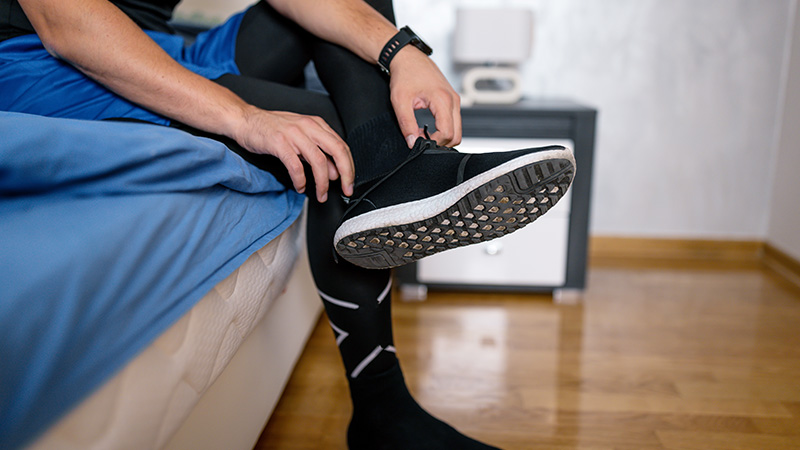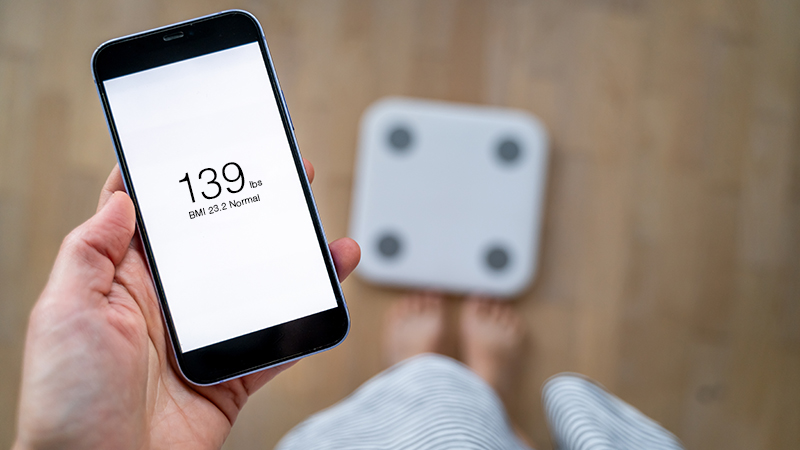Wearable Technology: Your Heart’s New Best Friend
Your Smartwatch Can Do More Than Count Steps. It Can Help Save Lives.
Published August 2024
Heart rhythm disorders like atrial fibrillation (AFib) can lead to serious heart-related complications if left untreated. Often times, these conditions present few to no symptoms, making it hard to notice them. Now, thanks to wearable technology, these conditions can be detected in real time, right on your wrist.
What is a heart rhythm disorder?
Our research is taking these devices to the next level.— Rod S. Passman, MD
A heart rhythm disorder (also called arrhythmia) is a condition where your heart is beating too fast, too slow or with an irregular rhythm.
The most common heart rhythm disorder in adults is atrial fibrillation (AFib), a complex condition affecting your heart’s upper chambers — the right and left atria. AFib affects close to five million people in the United States. Other heart rhythm disorders include:
- Sick sinus syndrome, which affects your sinus node, the heart’s natural pacemaker
- Ventricular tachycardia, which affects your heart’s lower chambers — the right and left ventricles
While some heart rhythm disorders cause symptoms like palpitations or dizziness, other disorders can be life-threatening if left untreated. Typically, life-threatening heart rhythm disorders are treated with ablations (procedures to eliminate areas of the heart producing abnormal rhythms) or implanted devices like pacemakers and defibrillators.
According to Rod S. Passman, MD, a cardiac electrophysiologist at Northwestern Medicine, a total of about 1,800 ablations and cardiac rhythm management device implantations are performed at Northwestern Medicine Bluhm Cardiovascular Institute per year.
What role do wearables play in heart rhythm disorders?
Many people with heart rhythm disorders have no symptoms or symptoms that are intermittent (symptoms that come and go). This makes it easy for these conditions to go undetected.
Wearables like smartwatches and hand-held devices that connect to your smartphone can help you detect abnormal heart rhythms in real time, even when symptoms are absent or intermittent. Using one can be like having a heart monitor on at all times.
“The ability to sense abnormal heart rhythms like atrial fibrillation is one of the biggest impacts that wearables can make,” says Dr. Passman. “Many patients come to us because their smartwatch told them they had an abnormal rhythm even if they had no symptoms. I have also had countless patients who had intermittent symptoms that could not be picked up with the type of sporadic monitoring we often perform in cardiology but were detected by a rapid or irregular pulse noted on their wearable and confirmed by an ECG performed on the device itself."
What can a wearable tell someone about their heart rhythm?
Wearables don’t just help detect a heart rhythm disorder. They can tell you:
- Your abnormal heartbeat pattern: Different diagnoses require different treatment plans. Your wearable can show if your heart is beating too slow, too fast or with an irregular rhythm. This can help your physician get you on the right treatment plan as soon as possible.
- How often your episodes occur: Your wearable can show how often your heart beats abnormally. Knowing this frequency can help your physician gauge the severity of your condition and decide what steps to take.
- What your symptoms mean: Your wearable can show you exactly when an irregular heartbeat episode occurred. By recording the symptoms during this episode, you'll start to understand how your condition specifically affects you. If new symptoms present themselves, it may be time to call your physician.
- If your treatment is working: By providing before and after data, your wearable can indicate if your treatment plan is making a difference. This will help your physician adjust your care as needed.
Ultimately, your wearable can help you and your physician make better decisions about your health.
Preventing Stroke in People With AFib
Through a $37 million clinical trial funded by the National Institutes of Health and led by Dr. Passman, the American Heart Association and Northwestern University Feinberg School of Medicine are exploring other ways wearables can help people with heart rhythm disorders.
The study aims to change stroke prevention care for patients with AFib. According to Dr. Passman, people with AFib are typically treated with blood thinners but they only need to be on them when the risk of stroke is at its highest. Wearables could alert someone when they are in an episode of AFib, and they could then take their blood thinners when it’s needed most.
"Our research is taking these devices to the next level — not just to detect irregular rhythms but to help manage patients in a personalized manner," says Dr. Passman.
The Future of Wearables in Heart Care
Dr. Passman thinks the capabilities of wearables will only get better and better as time goes on.
"I expect these devices to get more accurate for arrhythmia (irregular heartbeats) detection with the incorporation of AI," he says. "In the future, perhaps these devices will also measure other critical physiologic parameters such as blood pressure and glucose."
Learn what is considered a healthy heart rate.






